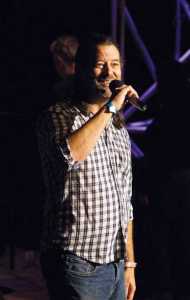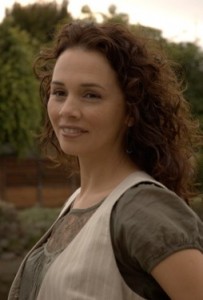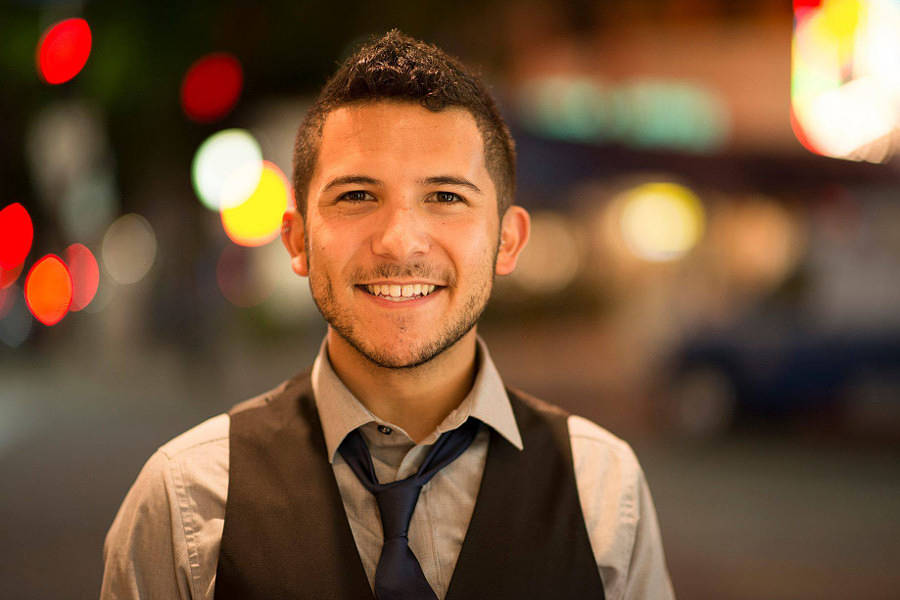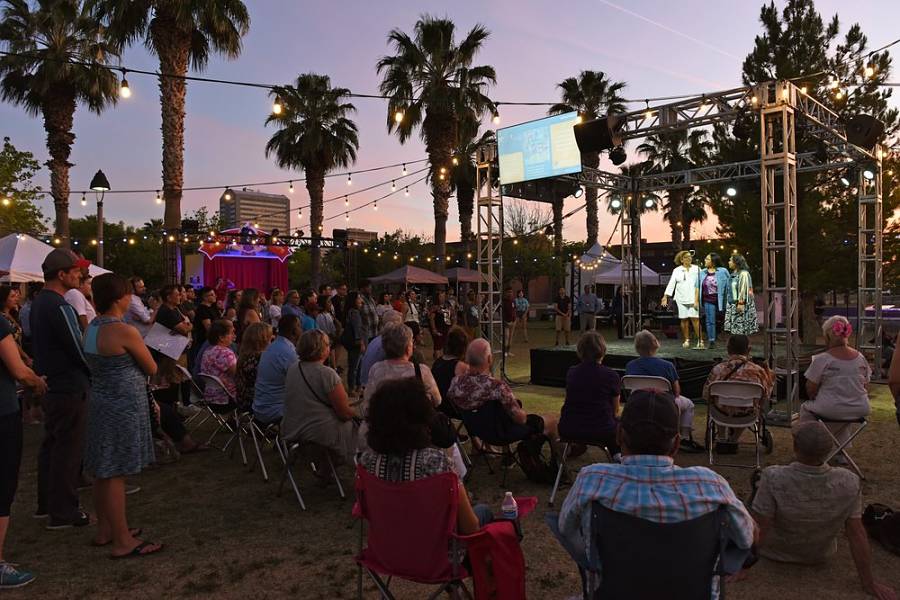This is one of two stories about theatre in Arizona; click here to read more.
Sometimes you write one play, and sometimes that one play turns into a trilogy.
Urban Rez, produced by the Cornerstone Theater in Los Angeles in 2016, is about the day-to-day life of the more than 140,000 Native Americans who live in Los Angeles County. Native Nation, hosted by the Salt River Pima-Maricopa Indian Community in Phoenix, premiered in 2019, and was a collaboration between Cornerstone and ASU Gammage in Tempe, Arizona. The state is home to more than 386,000 Native Americans.
The fact that Urban Rez, Native Nation and a so far untitled work-in-progress set in South Dakota are now part of a trilogy is a testament to the universality of the Indigenous experience in North America—and to the power of serendipity.
“We didn’t intend for it to be a trilogy,” said Michael John Garcés, who is credited with playwright Larissa FastHorse as a co-creator of the shows.
Indeed Native Nation, the show’s Arizona installment, wasn’t even a glint in the writer’s eye until a chance meeting between Garcés and Michael Reed, senior director of programs and organizational initiatives for Gammage at Arizona State University. Garcés and Reed happened to be on a panel together at Western Arts Alliance’s annual conference in Los Angeles in 2016. Garcés’s presentation about Urban Rez piqued Reed’s interest so much that he approached Garcés immediately after the discussion ended to talk about replicating the project in Arizona.
“It was a kind of professional crush from the start,” says Reed, who put the question to Garcés, “Would you guys be interested in talking about doing a show in Arizona, not Urban Rez, but something similar in terms of process?”

Initially, Garcés admits, they all thought they “could just adjust Urban Rez” for a different state. But FastHorse and Garcés soon realized there were big differences between Native populations in urban Los Angeles versus Arizona, where, unlike Los Angeles, “Arizona’s Indigenous communities have stronger ties to their reservations.” Arizona is home to 22 federally recognized tribes, including the Navajo reservation, the largest in the U.S., which spans about 25,000 square miles, an area roughly the size of West Virginia.
While each play in the trilogy is told, in typical Cornerstone fashion, through the eyes of the communities the stories are about, they all have one other thing in common: The plays are not aimed at white audiences.
“My job is to change the face of American theatre but also to change audiences,” says FastHorse, a member of the Sicangu Lakota Nation in South Dakota, explaining that when she writes for white theatregoers, her goal is to “get in your head and make you think differently” and “translate the Indigenous experience in a way that white culture will listen and take it in.” Her popular The Thanksgiving Play fits that mold. The satire of white liberal political correctness was among the most produced of the 2019-20 season.
Urban Rez, Native Nation, and the third work in the trilogy, slated for production in 2021 or 2022, are designed to be what FastHorse calls “intentionally incompatible experiences” for non-Indigenous people. While she isn’t actually trying to alienate white theatregoers, the trilogy’s narratives avoid any pretense that they need or want a non-Indian stamp of approval. Instead, said Fasthorse, these works are created by and for Indigenous people as a way for them to tell their stories the way they want them told.
The works employ Cornerstone’s signature approach. Based in Los Angeles, the company has been staging professional theatre for more than 30 years “based on the stories, concerns, and issues of a given community.” The company uses a mix of professional and nonprofessional artists, the latter cast from the communities where the shows are based. The cast for Urban Rez, for instance, included 14 Indigenous people representing 15 tribal nations.
Cornerstone’s method was perfectly suited for what FastHorse wanted to achieve with Urban Rez, which filled the seventh slot in a series of nine Cornerstone productions about people’s relationship to hunger, including issues such as food equity, urban and rural farming, community gardens, and food addiction.

But unlike other plays in the series, Urban Rez wasn’t about lack of food but about hunger of a different sort: the craving by Indigenous people to have their culture and sometimes even their very existence acknowledged and appreciated, not just in the Los Angeles Basin and Orange County regions, where the play is set, but as a vibrant and vital segment of American society and history.
The United States is home to more than 550 federally recognized Indian tribes. At least 109 tribes are in California, more than any other state. The official status of another 80 tribes in California, including several in the Los Angeles area, has been denied by the federal government, said FastHorse. In some cases, tribes lacking the federal stamp of approval have been officially deemed extinct.
“They are here—have been here for thousands of years—and yet have no claim to their ancestral lands, no claim to their own name because the federal government [in some cases] has declared them extinct,” FastHorse told KCET television in Los Angeles in a 2016 interview. “At the same time, we are all living, working, and doing [Urban Rez] on this land that actually belongs to someone else who has no ability to claim it—which I found to be both tragic and a fascinating way of thinking about hunger.”
Vivian Pham, who was a second-year graduate student at UCLA and saw Urban Rez when it premiered, wrote about the show for the online scholarly publication, Mapping Indigenous Culture, in 2016.
“Urban Rez was an uncomfortable experience from start to finish, because each line documented my and many others’ first encounter with the Native American experience,” Pham wrote. “Even while the majority of us have heard of Native Americans, most of us don’t know much about the Indigenous people of America. We merely see Native Americans as ‘exotics’ who own casinos, receive full rides to American universities, and who look like the people featured in Disney’s Pocahontas…Most importantly, we see them as being acclimated, never wondering if they’ve found redemption for all the lives and homeland they’ve lost.”
The characters in Urban Rez explore a range of issues, including assimilation, water rights, tribal soveriengty, transgender rights, broken treaties, ongoing government duplicity, genocide, and the violation of Indian burial grounds by archeologists who treat ancestral remains like “bags of groceries.”
The cycle’s Arizona iteration, Native Nation, raises similar topics, but water rights, for instance, are addressed with greater urgency, given the challenges rural Indians in the state face on a daily basis—some 30 percent of residents on the Navajo reservation do not have running water, and the threat of major water shortages looms across the state. (This is one reason for the catastrophic impact of the coronavirus pandemic on Native populations: The Navajo Nationa recently surpassed the states of New York and New Jersey in COVID-19-related deaths.)
While reflective of Indigenous life in Arizona, many of the issues addressed in Native Nation, as in Urban Rez, mirror broader concerns in Native country. The topics of environmental degradation, the violation of sacred lands, and the tragedy of missing and murdered Indigenous women in the U.S. and Canada are all addressed in Native Nation.
FastHorse said the plays challenge not only persistent stereotypes and misrepresentations of Native people but also what many in Native culture regard as the community’s virtual erasure from wider American culture.
“With minimal mention of contemporary issues and ongoing conflicts over land and water rights or tribal sovereignty, Native Americans have become invisible,” wrote Crystal Echo Hawk, a founder and CEO of the nonprofit IllumiNative, a nonprofit coalition formed to counteract stereotypes and other misconceptions about Native people, in a column for Indian Country Today.
“This invisibility,” she continued, persists across every aspect of mass media, perpetuating the “omission of contemporary ideas and representations of the ways in which Native people contribute to society.”
While most of those cast in Urban Rez lived in and around Los Angeles, engaging Indian communities in Arizona took a lot more time and travel, said Reed of ASU Gammage. The Hopi and Navajo reservations, for instance, are in northeastern Arizona, the Apache tribes are east of the Phoenix Valley, the Havasupai and Hualapai tribes’ ancestral lands are in northwestern part of the state, and the Tohono O’odham reservation straddles the U.S.-Mexico border.
Despite these geographic challenges, FastHorse says that directly engaging the communities, as with Urban Rez, was critical to the process and spirit of Native Nation. Nothing made it into the final script, she says, without the express approval of the people she was writing about.
“We always went back to our community,” FastHorse recalls. “We always went back to the ways of presenting performance in a manner natural to the space and land. It’s on the land where you discover the moments of collective storytelling, the moments of individual storytelling, the call and response.”
FastHorse gathers narratives and themes that appear in the plays through “talking circles,” a traditional practice in which Indigenous people sit in a circle and share stories, concerns, triumphs, and laments. As a result, no one knows what the plays will be about until the members of the tribes have recounted their personal and collective experiences.
“I tried not to have any preconceived notions [about Native Nation], knowing how Cornerstone works,” says Reed, who also directs the Gammage’s cultural participation projects and its Beyond Series.
Native Nation was not Gammage’s first foray into Native American theatre and performance, said Reed. While it is best known for presenting major Broadway touring productions, like Hamilton, Book of Mormon, and Wicked, Reed says ASU Gammage sponsored a full-length Native production, Dancers of the Dreaming, in 1995, a collaboration with the Salt River Pima-Maricopa Indian Community (SRPMIC). The show included performers from SRPMIC and Aboriginal performers from Australia. About 10,000 people from five states traveled to Arizona to see the show. In the years since, Gammage has hosted a wide range of Indigenous performers from around the world.

Among the most gratifying things about creating the first two plays, according to FastHorse and Garcés, has been the change effected in the communities where the plays were created. Cornerstone has been known to complement or spur activism when it stages a play within a community, and Urban Rez and Native Nation are no exception. Garcés said the productions helped generate a sense of community and empowerment among the cast, crew, and the shows’ largely Indian audiences.
Actor Kenneth Ramos agrees. Raised on the Barona Band of Mission Indians reservation near Lakeside, Calif., Ramos is a UCLA graduate with a bachelor of arts degree in American Indian studies. He acted in Urban Rez and Native Nation. Being in the plays changed the course of his life, he says. He’s now a full-time actor and member of the Cornerstone ensemble.
“For me, there was a lot of growth that came from being a leader in the rehearsal room,” says Ramos. As one of only three professional actors in Urban Rez, Ramos was tasked with tutoring the show’s nonprofessional community performers in the art of drama and stagecraft. “Just something as simple as learning lines causes anxiety [for non-actors],” Ramos says. “I was there to offer support and safety for them.”
The shows, Ramos adds, gave him room to explore some of the most controversial issues affecting Native people, like “blood quantum,” a controversial process developed decades ago by the federal government to determine how much “Indian blood” a person has and whether they qualify for tribal membership.
Rosetta Walker is a community activist turned sometime community actor now, thanks to Native Nation. “It was beautiful,” she says. “It was a cast of about 40 strangers, 40 people from across the [Phoenix] Valley and Arizona, all thrown into a pot to see what kind of cake we could make.”
One of Walker’s roles was to lead audience members in a discussion about missing and murdered Indigenous women. In real life, Walker was part of a successful grassroots push to pass Arizona House Bill 2570, which established a task force on missing and murdered Indigenous women and girls, in the State Legislature last year.
In a way, Walker’s role in Native Nation was as part educator and part healer. Many who attended the show, she says, “didn’t know anything about young Native American men and women being abducted, raped, and murdered.” Others, namely fellow Native Americans, would say, “This happened to me. I know someone who’s missing. My cousin went missing when she was 15. Or my auntie was killed in 1976.”
Attorney and playwright Claude Jackson performed in Native Nation. It was his first acting role.
“[Native Nation] opened up some things for me locally because of the great people I met working the show,” says Jackson, a member Arizona’s Gila River Indian Community. “Some were actors, some were in theatre, and some, like me, had never done it before.” Jackson, encouraged by the experience, went on to take first place last year at the Autry Museum’s Native Voices short-play festival for a piece called Cashed Out.
While he plans to keep writing plays and film scripts, Jackson said appearing in Native Nation inspired him to pursue acting more diligently. He played the lead in Indian School by Esther Almazan at ASU’s TheatreLAB in late March. The play is about a Yaqui Indian named Charlie, a survivor of an Indian boarding school, who returns to his village to mourn the death of his son.
Ramos, who grew up knowing little about his Indigenous roots, now says, “I’m a product of the kind of empowerment that happens when we see ourselves portrayed in a truthful manner. There’s a validation that happens, your perspective is validated. I don’t see myself on Netflix. I don’t see myself on Hulu. I saw myself in Native Nation.”
James E. Garcia is a journalist, playwright, and the editor and publisher of VanguardiaAmerica.com. He lives with his family in Phoenix.


